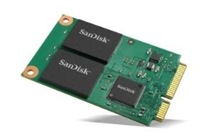The new ASUS Eee PC T91MT netbook offers a broad array of features that contribute to an improved user experience.
- Running Microsoft Windows 7 home premium edition OS, the netbook’s rotating display supports multi-touch gestures such as pinching, rotating and swiping, and can function as a tablet PC.
- Using a 256-level pressure sensor, the Eee PC™ T91MT’s crisp and responsive 8.9" multi-touch screen reproduces handwriting beautifully and accurately whether written using a finger or the bundled ergonomically-designed stylus.
- With its 8.9-inch display, compact size (8.86 x 6.46 x 0.99 inches) and a total weight of less than 1kg (2.12lbs.), the ASUS T91MT is ideal for on-the-go consumers who need an advanced netbook that can easily be taken anywhere.
“SanDisk is pleased to contribute to the stylish design of the Eee PCTM T91MT netbook from ASUS,” said Yoram Cedar, executive vice president, OEM business unit and corporate engineering, SanDisk. “ASUS’s selection of SanDisk is also an indication that the market is ready to progress beyond traditional mechanical storage provided by hard disk drives and enter a new era of computing that uses highly durable and power-saving SSDs. As a supplier of modular SSDs for the PC OEM industry, we see increased interest for the SanDisk pSSD drive from companies that bring to the market portable computing solutions that are smaller, lighter and faster.”
The SanDisk pSSD drive includes an industry-standard PATA interface and a Mini PCIe form factor, delivering a variety of features that complement the ultra-thin ASUS T91MT netbook. The 32GB SanDisk pSSD drive’s compact size (weighing only 6.4 grams and measuring 32.2mm x 50.95mm x3.6mm) and low power consumption (average power of 0.15W2) are well-suited to the ASUS netbook’s particular form factor and extended battery life requirements.
"SanDisk pSSD’s small form factor and low power consumption contributes to the stylish design and light weight of the Eee PCTM T91MT multi-touch netbook,” said Jerry Shen, CEO, ASUSTeK Computer Inc. “With greater portability and longer battery life, our customers gain the freedom and flexibility to use their laptops anytime, anywhere.”
SanDisk’s modular solid state drive, pSSD, also allows ASUS to deliver greater performance to its users. pSSD offers 9,000 vRPM3 of performance and has the added benefit of employing nCache™ technology4, a large non-volatile write cache technology that boosts burst random write performance. nCache™ technology improves user responsiveness and helps prevent incidence of drive "stalling."
SanDisk pSSD Gen2 drive supports Windows 7, Windows XP and Linux. The drive comes in a variety of PATA and SATA interfaces and is available to OEMs in capacities ranging from 8GB to 64GB. More information about SanDisk’s pSSD drives is available at: www.sandisk.com/pssd
About SanDisk
SanDisk Corporation is the global leader in flash memory cards, from research, manufacturing and product design to consumer branding and retail distribution. SanDisk’s product portfolio includes flash memory cards for mobile phones, digital cameras and camcorders; digital audio/video players; USB flash drives for consumers and the enterprise; embedded memory for mobile devices; and solid state drives for computers. SanDisk is a Silicon Valley-based S&P 500 company, with more than half its sales outside the United States.
1 1 gigabyte (GB) = 1 billion bytes.
2 While running MobileMark and average (typical) power.
3 vRPM (virtual Revolutions Per Minute) – a metric to compare SSD performance in client PCs with theHDD and with other SSDs. vRPM answers the question how fast would a HDD have to spin in order to deliver the same performance as a SSD in a client PC. vRPM = 50 / ((0.5 / 4kB random read IOPS) + 0.5 / 4kB random write IOPS)).
4 nCache™ acceleration technology is a large Non Volatile Write Cache, a unique feature in SanDisk pSSD-P2 and SanDisk pSSD-S2 that improves random write performance and ensures an improved user experience. Studies show that modern operating systems mostly access the storage device using 4k access blocks. The cache is filled during these small write commands and emptied during idle time when the host is not accessing the drive, with no risk of data loss. For a typical everyday use, the write performance that the users see is the nCache technology (burst) high performance, and not steady state (sustained) SanDisk pSSD performance. Based on IOmeter 4K random write test.
SanDisk’s product and executive images can be downloaded from: http://www.sandisk.com/corporate/media.asp
SanDisk’s web site/home page address: http://www.sandisk.com


1 comment for “SanDisk’s Modular Solid State Drive Selected by ASUS for Its Unique Computer with Rotating Touchscreen Display”